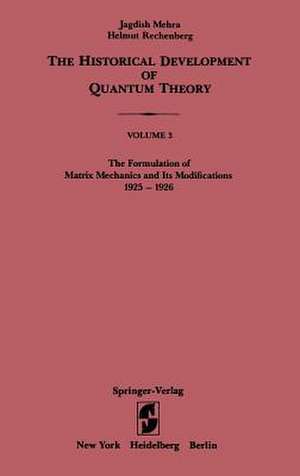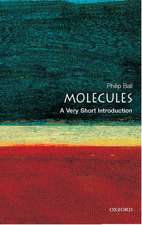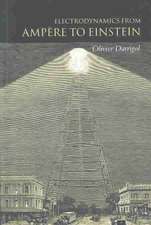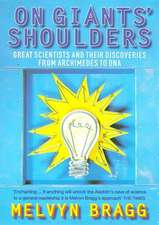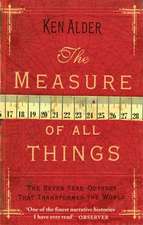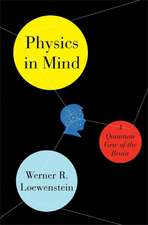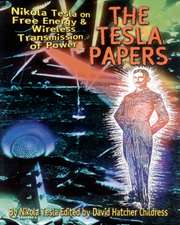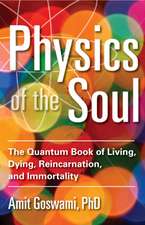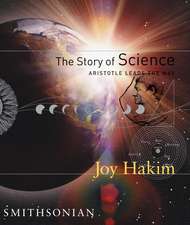The Formulation of Matrix Mechanics and Its Modifications 1925–1926: The Historical Development of Quantum Theory, cartea 3
Autor Jagdish Mehra, Helmut Rechenbergen Limba Engleză Hardback – 15 noi 1982
| Toate formatele și edițiile | Preț | Express |
|---|---|---|
| Paperback (1) | 1383.00 lei 43-57 zile | |
| Springer – 28 dec 2000 | 1383.00 lei 43-57 zile | |
| Hardback (1) | 1225.31 lei 43-57 zile | |
| Springer – 15 noi 1982 | 1225.31 lei 43-57 zile |
Preț: 1225.31 lei
Preț vechi: 1494.28 lei
-18% Nou
Puncte Express: 1838
Preț estimativ în valută:
234.47€ • 245.42$ • 195.15£
234.47€ • 245.42$ • 195.15£
Carte tipărită la comandă
Livrare economică 31 martie-14 aprilie
Preluare comenzi: 021 569.72.76
Specificații
ISBN-13: 9780387906751
ISBN-10: 0387906754
Pagini: 334
Ilustrații: VIII, 334 p.
Dimensiuni: 156 x 234 x 21 mm
Greutate: 0.66 kg
Ediția:1982
Editura: Springer
Colecția Springer
Seria The Historical Development of Quantum Theory
Locul publicării:New York, NY, United States
ISBN-10: 0387906754
Pagini: 334
Ilustrații: VIII, 334 p.
Dimensiuni: 156 x 234 x 21 mm
Greutate: 0.66 kg
Ediția:1982
Editura: Springer
Colecția Springer
Seria The Historical Development of Quantum Theory
Locul publicării:New York, NY, United States
Public țintă
ResearchCuprins
I The Rediscovery of a Mathematical Tool.- I.1 Max Born’s Interpretation of Heisenberg’s Quantum Condition.- I.2 The Development of Matrix Calculus.- I.3 Early Applications of Matrix Methods in Physics.- I.4 Born’s New Collaborator: Pascual Jordan.- II Matching the Tools and the Task.- II.1 The Programme of Matrix Mechanics.- II.2 Operations with Matrices.- II.3 Dynamical Laws and Energy Conservation.- II.4 An Example of Discrete Mechanics: The Oscillator.- II.5 Preliminary Remarks on Radiation.- III Completion of the Matrix Scheme.- III.1 The Three-Man Collaboration.- III.2 Towards a New Perturbation Theory.- III.3 Several Degrees of Freedom and Degeneracy.- III.4 Born’s Idée Fixe and a Letter to Niels Bohr.- III.5 The Eigenvalue Problem and the Transformation to Principal Axes.- III.6 Continuous Spectra and the Significance of the Transformation Matrix.- IV The Success of Matrix Mechanics.- IV.1 The Treatment of Dispersion Phenomena.- IV.2 Fluctuations in Cavity Radiation.- IV.3 The Conservation of Angular Momentum.- IV.4 Wolfgang Pauli’s Conversion.- IV.5 The Solution of the Hydrogen Problem.- IV.6 The Problems of Intensities and the Diatomic Molecule.- V Modifications and Extensions of Matrix Mechanics.- V.1 Nonmechanical Stress versus Spin.- V.2 Field-Like Representation of Quantum Mechanics.- V.3 The Operator Mechanics.- V.4 Multiply Periodic Systems: Action-Angle Variables and the Method of Complex Integration.- V.5 The Electron Spin, Fine Structure and Anomalous Zeeman Effects.- V.6 Key to the Helium Problem.- References.- Author Index.
Recenzii
Comments by distinguished physicists on "The Historical Development of Quantum Theory":||"…the most definitive work undertaken by anyone on this vast and most important development in the history of physics. Jagdish Mehra, trained in theoretical physics under Pauli, Heisenberg, and Dirac, pursued the vision of his youth to write about the historical and conceptual development of quantum theory in the 20th century…This series of books on the HDQT has thus become the most authentic and permanent source of our knowledge of how quantum theory, its extensions and applications developed. My heartfelt congratulations."|-Hans A. Bethe, Nobel Laureate||"A thrilling and magnificent achievement!"|-Subrahmanyan Chandrasekhar, FRS, Nobel Laureate||"…capture(s) precisely, accurately, and thoroughly the very essence and all the fundamental details of the theory, and that is a remarkable achievement…I have greatly enjoyed reading these books and learned so many new things from them. This series of books will remain a permanent source of knowledge about the creation and development of quantum theory. Congratulations!"|-Paul A. Dirac, FRS, Nobel Laureate||"The wealth and accuracy of detail in 'The Historical Development of Quantum Theory' are breathtaking."|-Richard P. Feynman, Nobel Laureate
